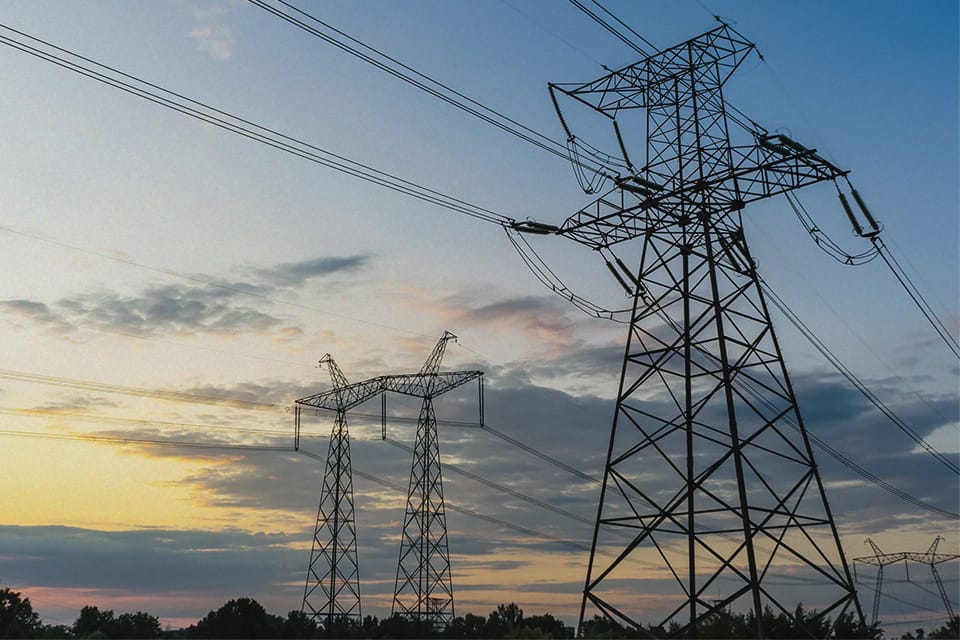
Holiday Bonus Episode: Safety Tips You Need This Season | Risk Matrix Episode 122
THE RISK MATRIX Cutting-edge podcast on occupational safety and risk management. Hosted by industry titans: JAMES JUNKIN, MS, CSP, MSP,…

In the past, electricity typically flowed in one direction, from power plants to households and commercial establishments. While this system functioned adequately, the limited communication between the parties often resulted in resource wastage. However, the emergence of smart grid technology is helping the utilities industry change this dynamic by promoting more information sharing, allowing everyone to make more informed decisions.
This article explains the smart grid technology concept, its applications, and its challenges and opportunities.
Smart grid technology is a network of smart meters and sensors that communicate seamlessly. This two-way communication allows utility companies to monitor how consumers use resources, recognize consumption trends, and find areas for improvement in efficiency.
The real-time data exchanged within these power grids helps both consumers and utility providers alike. Consumers can conveniently track their household energy usage through smartphones and make adjustments, such as turning off lights. These informed decisions on energy consumption can ultimately result in savings on utility costs.
Moreover, smart grids offer more than perks; they are crucial in promoting sustainability. Integrating energy sources like wind power into smart grids significantly reduces our reliance on fossil fuels.
Nevertheless, using energy sources presents challenges, given their nature. For instance, solar power is unavailable at night, while wind power isn’t constant. This is where the grid’s intelligence comes into action. The grid can adapt its power distribution and storage mechanisms by analyzing energy patterns and production levels to ensure an energy supply.
To illustrate, power generated during daylight hours can be stored in batteries for later use or supplied back to the grid when needed.
Smart grids extend beyond electricity alone. Water is another critical resource, and smart city initiatives aid in practicing efficient water management. Equipped with sensors, smart grids can swiftly detect leaks in pipes, conserving water and reducing costs.
Smart irrigation systems can automatically adapt watering schedules based on real-time soil moisture levels to maintain parks and gardens while minimizing water wastage.
Even streetlights benefit from grid technology. Traditional orange-glowing fixtures are being replaced with energy-efficient LEDs that provide bright illumination and adjust brightness according to factors like time of day, weather conditions, and pedestrian activity.
The future of our cities is undeniably linked to the health of our planet. Smart city initiatives and a forward-thinking utilities sector can have a significant positive impact. By making energy-saving decisions, integrating renewable resources, and promoting water conservation, smart cities can significantly reduce their carbon footprint.
Smart grids hold immense potential for revolutionizing our cities, but the journey won’t be without its bumps. Three key challenges are as follows:
As more devices connect to the grid, the attack surface for hackers expands. Hackers might try to infiltrate the smart grid and manipulate energy flow, causing chaos and blackouts.
As such, robust cybersecurity measures are crucial to safeguard sensitive data. This means utilities must invest in cutting-edge security solutions and implement best practices to stay ahead of evolving threats.
Transforming cities into smart ecosystems requires significant upfront investment. The cost of replacing traditional meters with smart ones across an entire town or installing a network of charging stations for electric vehicles is substantial.
Utilities need to explore innovative financing models and public-private partnerships to bridge the funding gap and make these smart city initiatives a reality.
Establishing clear regulations and standards is crucial in a complex system involving various stakeholders in different cities. If other locations use smart grid technologies that are not compatible with one another, progress and interconnectivity are hindered.
However, standardization can help avoid these issues by ensuring smooth operation and facilitating collaboration between utilities and technology providers.
However, with these challenges come exciting opportunities, including the following three:
Smart grids can pave the way for a more sustainable future by helping society rely less on fossil fuels through renewable energy sources like solar and wind power. They also encourage energy efficiency, allowing everyone to get the most out of the resources they consume.
Smart grids empower consumers with valuable insights about their energy usage, enabling them to make more informed choices. These changes in habit can translate to lower utility bills and a more sustainable lifestyle. Additionally, smart grids can incentivize consumers to adopt renewable energy sources like rooftop solar panels, fostering a more distributed and resilient energy ecosystem.
Smart grids can become the backbone of cities by enabling a more connected and efficient urban environment. This can include traffic management systems that adjust to real-time conditions, reducing congestion and emissions. Smart grids can also facilitate the growth of electric vehicles and smart homes, further contributing to a more sustainable and interconnected future.
The road ahead for smart grid technology is paved with both challenges and opportunities. By embracing innovation, fostering collaboration, and prioritizing security and sustainability, we can unlock the immense potential of smart grids to create a more efficient, livable, and environmentally friendly future for our cities. This future is not just a possibility – it’s within our reach, and smart grid technology is the key to making it a reality.
However, to get the most out of any smart technology, you need the right risk management and ESG solutions to improve health and safety and highlight your commitment to a greener tomorrow.
Consider collaborating with us to configure a solution to meet your specific supply chain and compliance needs and collaborate with our subject matter experts to meet higher sustainability standards.
Contact us today to learn more.


THE RISK MATRIX Cutting-edge podcast on occupational safety and risk management. Hosted by industry titans: JAMES JUNKIN, MS, CSP, MSP,…

THE RISK MATRIX Cutting-edge podcast on occupational safety and risk management. Hosted by industry titans: JAMES JUNKIN, MS, CSP, MSP,…
We’ll send you practical and insightful supply chain risk management info that can benefit your business. Plus, important company updates that keep you in the loop.
